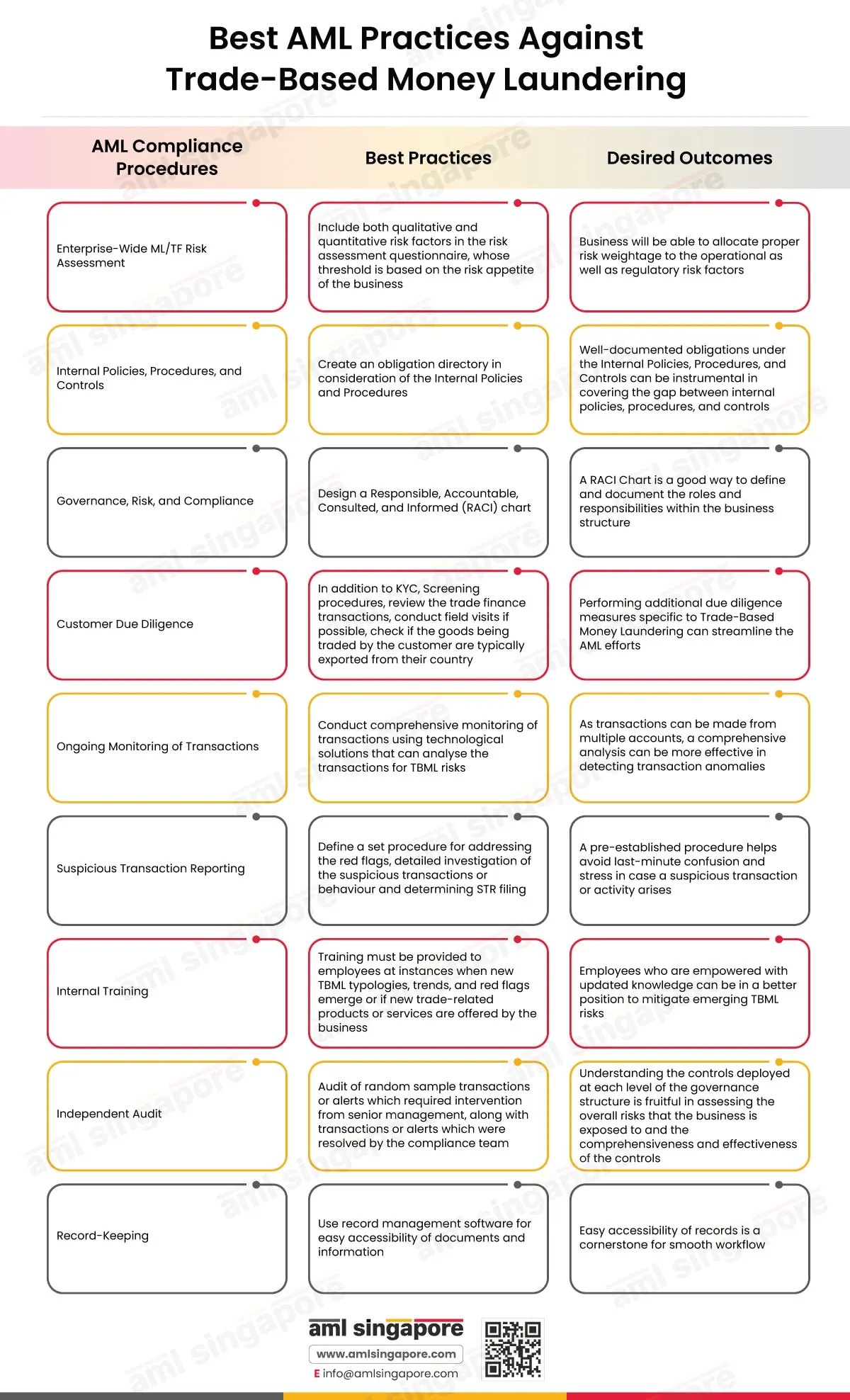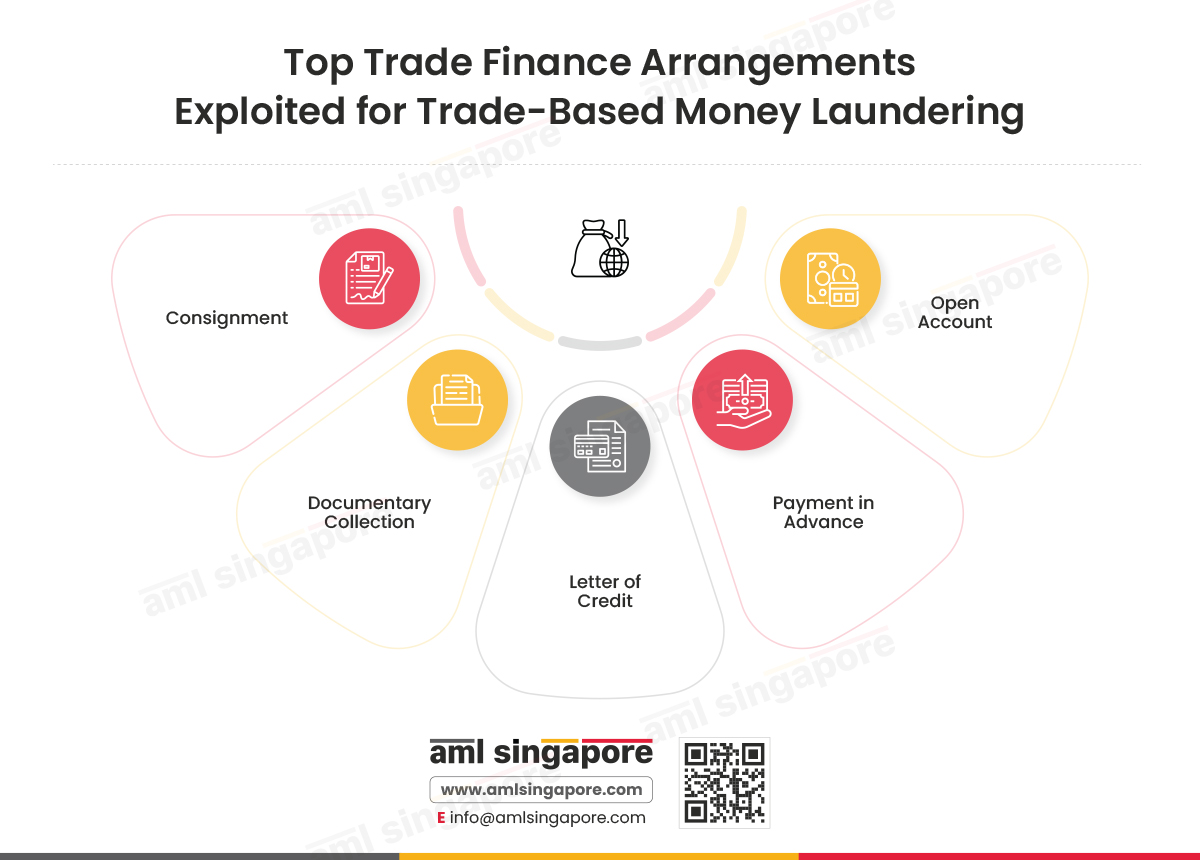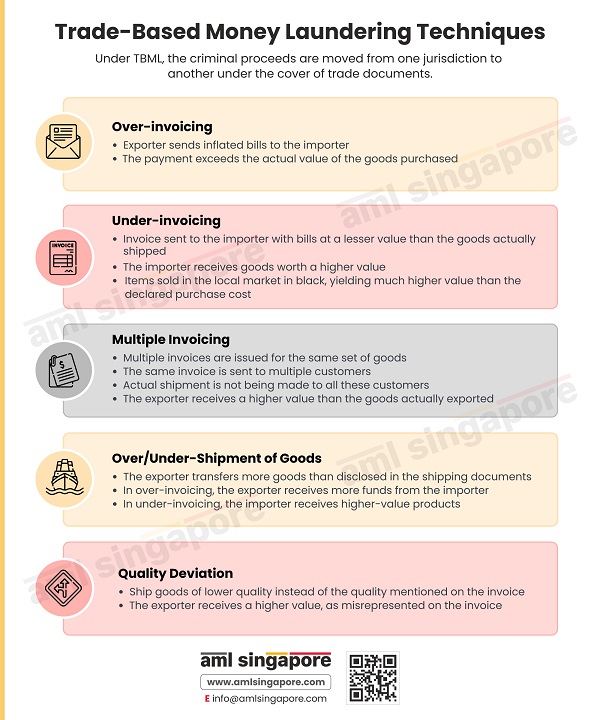Best AML Practices Against Trade-Based Money Laundering
When implementing Anti-Money Laundering (AML) controls against Trade-Based Money Laundering, regulated entities like businesses and financial institutions often question what changes they can make to their existing controls to improve their chances of mitigating money laundering risks. In this infographic, we discuss the best AML practices against Trade-Based Money Laundering (TBML) along with the desired outcomes that a business can achieve by following the below-mentioned AML compliance tips.
Best Practice for Enterprise-Wide Risk Assessment against Trade-Based Money Laundering
When conducting an Enterprise-Wide Risk Assessment (EWRA), regulated entities should include both qualitative and quantitative risk factors in the risk assessment questionnaire, where the threshold for risk factors is based on the risk appetite of the regulated entity’s business.
This way, regulated entities will be able to allocate proper risk weight to operational and regulatory risk factors.
Internal Policies, Procedures, and Controls Best Practices against TBML
When documenting the Internal Policies, Procedures, and Controls (IPPC), businesses and financial institutions should, as a best practice, create an obligation directory in consideration of their internal policies and procedures since well-documented obligations under the Internal Policies, Procedures, and Controls can be instrumental in covering the gap between the internal policies, procedures, and controls.
Best Governance, Risk, and Compliance Strategies to Prevent TBML
Designing a Responsible, Accountable, Consulted, and Informed (RACI) Chart as a best practice for Governance, Risk, and Compliance is a good way to define and document the roles and responsibilities within the business structure.
Best CDD Solutions for Businesses to Counter TBML
In addition to the typical KYC and screening procedures, reviewing the trade finance transactions and conducting field visits, if possible, to check if the goods being traded by the customer are typically exported from their country is a good practice for businesses to counter TBML as performing additional due diligence measures specific to Trade-Based Money Laundering can streamline their AML efforts.
Best Practices for Ongoing Monitoring of Transactions for TBML Detection
When conducting ongoing monitoring of transactions, comprehensive monitoring with the help of technological solutions can be a great practice for TBML detection, as transactions can be made from multiple accounts, and a comprehensive analysis can be more effective in detecting transaction anomalies.
Suspicious Transaction Reporting Best Practices for TBML Risk Management
For the purpose of Suspicious Transaction Reporting, The practice of defining a set procedure for addressing the red flags, detailed investigation of the suspicious transactions or behaviour and decision-making with regards to STR filing can be adopted by regulated entities as a pre-established procedure to help avoid last minute confusion and stress in case a suspicious transaction or activity arises.
Best Internal Training Strategies for TBML Prevention
For streamlining the training strategies against TBML, training must be provided to employees at instances when new TBML typologies, trends, and red flags emerge or if new trade-related products or services are offered by the business because employees who are empowered with updated knowledge can be in a better position to mitigate emerging TBML risks.
Best Independent Audit Solutions against Trade-Based Laundering Techniques
As a best practice, Random sample transactions or alerts which required intervention from senior management should be audited, but along with that, the transactions or alerts which were resolved by the compliance team should also be randomly sampled and audited to understand the controls deployed at each level of the governance structure is fruitful in assessing the overall risks that the business is exposed to and the comprehensiveness and effectiveness of the controls.
Record-Keeping Best Practices for Regulated Entities in Singapore against TBML Red Flags
For the purpose of record-keeping, as a best practice, use document management software for easy accessibility of documents and information for smooth workflow.
AML Singapore’s Key Takeaways on Best Practices Against Trade-Based Money Laundering (TBML)
While implementing Anti-Money Laundering (AML) controls, regulated entities in Singapore, i.e. Businesses and Financial Institutions, can adopt the above-mentioned best practices to improve the effectiveness of their compliance efforts against TBML risks.
Elite Traders Don’t Just Follow AML Rules, They Leverage the Rules to Get Bigger Deals
Join the Elite Club with AML Singapore’s Tried and Trusted AML Compliance Services




